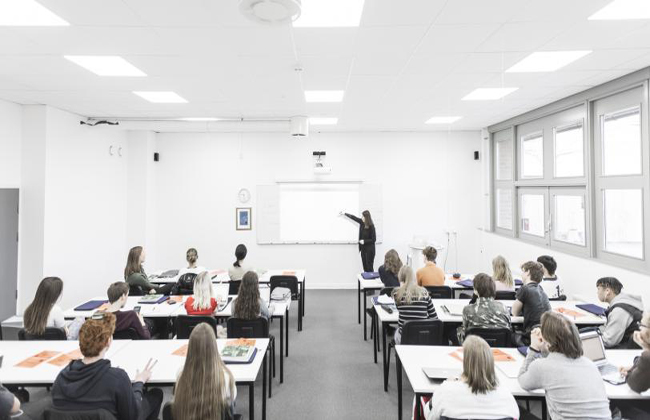Mental illness and stress among young people is a major problem in school. According to the National Board of Health, mental illness between the ages of 10 and 17 has increased by more than 100 percent over the past 10 years. One of the explanations may be the inferior illumination. It is time to embrace research and knowledge regarding the importance of the light environment for student health and wellbeing, writes several researchers and specialists.

Students who stay in daylight during the school day have better health than students who do not
Much in today's school environment is good, but the debate often overlooked how the light in schools should be designed to make students and teachers feel good and able to perform. Research shows that lack of access to daylight in indoor environments, as well as poor lighting, can contribute to mental ill-health, stress, sleep problems and concentration difficulties. Three problems are particularly prominent: disturbing flickering, glare and the absence of circadian rhythmic light that meets the brain and the physiological needs of the body. Non-visual flicker and glare can cause headaches, stress symptoms, and poor lighting can lead to headaches, fatigue, difficulty concentrating, depressed mood and sleep problems.
The Swedish Work Environment Authority and the Public Health Authority's recently published knowledge compilations about the impact of daylight on health and performance emphasize that indoor work and reduced outdoor living increase ill health in working life and that students who stay in daylight during school day have better health than students who do not. Data from the Stress Research Institute show that as many as 50 percent of all those who work indoors experience fatigue, energy shortages and worsening mood during autumn and winter.
The procurement authority emphasizes the importance of choosing energy-saving lighting in the school. Issues related to daylight become important only if it is possible to save energy. The decisions are rarely based on insights about the brain and the body's real need for light and the impact on student health and well-being.
Lighting environments that promote health and learning are important for all students. For children with NPF (neuropsychiatric functional variations such as ADHD, ADD and autism), poor lighting can be directly troublesome. Researchers at the Medical Center University in Amsterdam in 2014 showed that 69 percent in an adult group with ADHD are light-sensitive (have so-called photophobia).
Decision makers must take cognizance of the health impact of light into consideration and not fall for solutions that are cheaper at the time of purchase but which in the long run create personal suffering, negatively reduce performance and increase unnecessary social costs. In order to disseminate knowledge about light effects and put it into practice, several researchers and specialists have joined forces in the non-profit and independent organization The Light Initiative. One goal is to contribute to increased knowledge and awareness of how light environments can be optimized to increase human health and well-being. Sweden should become a pioneering country with regard to the school's work environment - and pattern formation for other work environments.
We believe that the following measures should be taken. The competence of the lighting contractor in the school must increase. We must embrace but also evaluate new technology and knowledge so that children and young people are not unnecessarily exposed to substandard light environments that cause ill health and concentration difficulties. Actors in the school need to work to do a thoughtful analysis of the light and develop action plans, with a particular focus on individuals who have special needs.
- Related Products -
